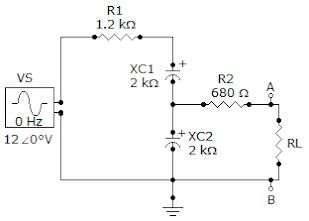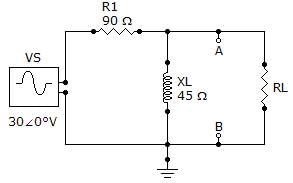Electrical Engineering (EE) Exam > Electrical Engineering (EE) Tests > Test: Network Theorems (A.C.) - 2 - Electrical Engineering (EE) MCQ
Test: Network Theorems (A.C.) - 2 - Electrical Engineering (EE) MCQ
Test Description
10 Questions MCQ Test - Test: Network Theorems (A.C.) - 2
Test: Network Theorems (A.C.) - 2 for Electrical Engineering (EE) 2025 is part of Electrical Engineering (EE) preparation. The Test: Network Theorems (A.C.) - 2 questions and answers have been prepared
according to the Electrical Engineering (EE) exam syllabus.The Test: Network Theorems (A.C.) - 2 MCQs are made for Electrical Engineering (EE) 2025 Exam.
Find important definitions, questions, notes, meanings, examples, exercises, MCQs and online tests for Test: Network Theorems (A.C.) - 2 below.
Solutions of Test: Network Theorems (A.C.) - 2 questions in English are available as part of our course for Electrical Engineering (EE) & Test: Network Theorems (A.C.) - 2 solutions in
Hindi for Electrical Engineering (EE) course.
Download more important topics, notes, lectures and mock test series for Electrical Engineering (EE) Exam by signing up for free. Attempt Test: Network Theorems (A.C.) - 2 | 10 questions in 30 minutes | Mock test for Electrical Engineering (EE) preparation | Free important questions MCQ to study for Electrical Engineering (EE) Exam | Download free PDF with solutions
Test: Network Theorems (A.C.) - 2 - Question 1
For the circuit given, determine the Thevenin voltage as seen by RL.
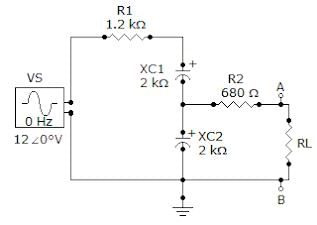

Detailed Solution for Test: Network Theorems (A.C.) - 2 - Question 1
Test: Network Theorems (A.C.) - 2 - Question 4
In order to get maximum power transfer from a capacitive source, the load must
Test: Network Theorems (A.C.) - 2 - Question 6
Referring to the given circuit, find ZTH if R is 15 kΩ and RL is 38 kΩ.
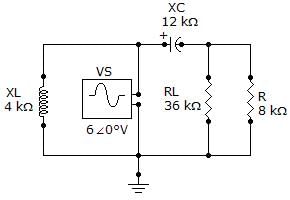
Test: Network Theorems (A.C.) - 2 - Question 8
Find the voltage across 2Ω resistor due to 20V source in the circuit shown below:
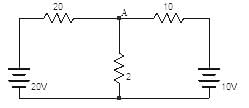
Detailed Solution for Test: Network Theorems (A.C.) - 2 - Question 8
Test: Network Theorems (A.C.) - 2 - Question 9
Find the equivalent thevenin’s resistance between terminals A and B in the circuit shown below.

Detailed Solution for Test: Network Theorems (A.C.) - 2 - Question 9
Test: Network Theorems (A.C.) - 2 - Question 10
Find the current flowing between terminals A and B of the circuit shown below.

Detailed Solution for Test: Network Theorems (A.C.) - 2 - Question 10
Information about Test: Network Theorems (A.C.) - 2 Page
In this test you can find the Exam questions for Test: Network Theorems (A.C.) - 2 solved & explained in the simplest way possible.
Besides giving Questions and answers for Test: Network Theorems (A.C.) - 2, EduRev gives you an ample number of Online tests for practice
Download as PDF



